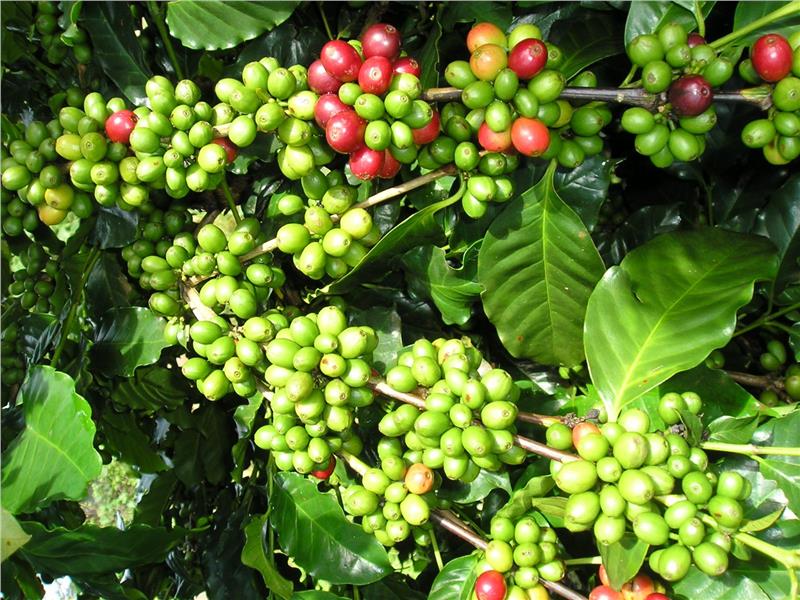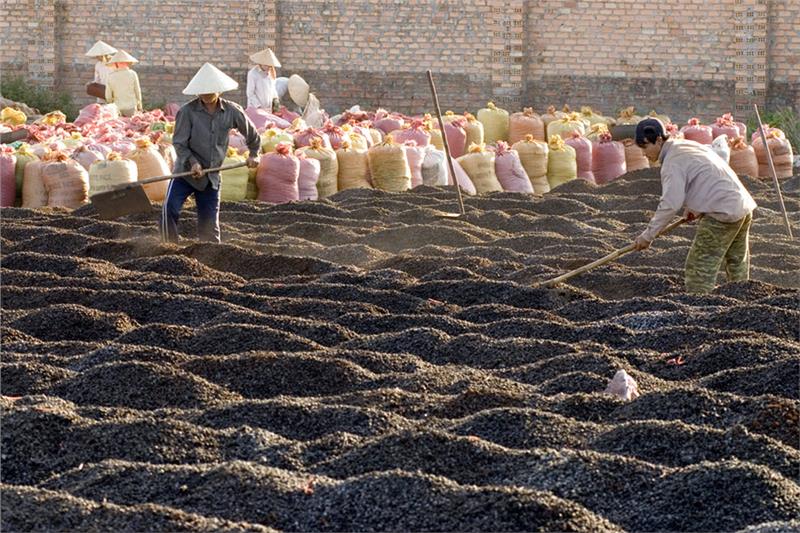According to Vietnam Coffee Association (VICOFA), Bloomberg shows that the coffee world output during 2014-2015 crop from October 1, 2014 will reach 1.69 million tones. The figure is higher than that of 1.65 million tones surveyed last month. However, price of coffee constantly increases during these days. It was predicted that the demand of coffee in 2014 would reach up to 4.95 million tones, 2.5% bigger year on year. Meanwhile, Brazil's coffee is expected to harvest constantly with 40 million packs (60kg/pack) in 2015, after the output in 2014 decreases 18%. It is the longest fall within the last 5 decades. In particular, the difference between arabica and robusta is at a very high level, which also reflects concerns about supply and demand. Moreover, the rate of two coffee types has high disparity, prompting many robusta coffee roasters buy more for mixing ratio in order to maintain profitability, as well as to entice consumers. That will be an advantage of Vietnam coffee.

Supply does not meet demand, which has pushed the price of coffee on the world market continuously to increase in recent days. Currently, the futures price of Vietnam robusta coffee (strength of VN) on London market has increased over 29% compared with that since the beginning of this year To specify, the futures price of robusta rises by over 4.1% to 2,1650 USD/tone on Oct 6 on ICE of London stock exchange. Oct 10 session on the futures floor of ICE Europe, the price of Robusta coffee for delivery in November rose by 30 USD/ton (equivalent to 1.39%) up to 2,181 USD / ton and futures delivery in January 2015 rising 34 USD ton (equivalent to 1.57%) up to 2,195 USD / ton. But, according to leading agricultural experts of Vietnam, coffee commodity trading on Southeast Asia's market also expressed excitement over the continuously rising price in the last few days. However, the supply of rubusta coffee during this time mainly comes from Vietnam.
Mr Do Ha Nam, Vice President of VICOFA said, currently Vietnam coffee export ranks 18th in the world, particularly Vietnam robusta coffee accounts for 60% of the total volume of world coffee export. In 2013, Vietnam coffee production achieved 1.2 million ton. The figure of Vietnam coffee export was 1.3 million ton with the turnover of US$ 2.7 million. This year, as heavy rains in metropolitan coffee areas of Central Highlands, the yield is forecasted to decline 10-15% year on year. Prospects for Vietnam coffee production this year will be close to the record, curing for global markets amid the fears of supplying shortage which pushes price to the highest point since May.

The Bloomberg's survey from prestigious traders and analysts shows that the yield in crop from Oct 1, 2014 1 can reach 69 million tons. This figure is higher than the 1.65 million tons surveyed last month, although lower than the high record of 1.71 million tons in last year. It is estimated that, the remaining coffee in the population not sold by the end of September only about 3% of the output of previous season. Robusta coffee futures price on London market has risen 29% since the beginning of this year due to the anticipation of consumption exceeding supply by adverse drought affecting the output of Brazil - the largest arabica and 2nd world robusta producer.
The International Coffee Organization (ICO) said that the supply shortage worldwide can continue in the next 2 years. However, the amount of Vietnam coffee in warehouses of farmers from the previous seasons will ensure the Viet Nam coffee export this year will reach 1.5 million tons. The commodity export turnover will reach US$ 3 billion. Price of bucket coffee in Central Highlands and Southeast in recent days continuously increases with the global market. Until Oct 10, the coffee price has increased 600-800 dong/kg, up to 42000-42500 dong /kg. It is predicted that in the next day Vietnam coffee price will remain stable in favor of farmers.
Bloomberg survey's result shows that farmers in Vietnam are holding about 50,000 tons of coffee from the last season to the end of September, just a half of 100,000 tons of the previous year, when the yield reached 1.5 million tons. Storage in warehouses in Ho Chi Minh City and surrounding areas have been reduced form 42,000 tons to 192,000 tons at the end of September from a month ago, as reported by Tong Teik Pte, the company under RCMA Commodities Asia Pte. While in Vietnam storage reduced, that in other countries increased. Storage in ICE rose 15% to 111.670 tons on September 29 compared to the previous two weeks. The average rainfall measured at 9 points in Dak Lak and 1 point in Dak Nong in August was 310.8 mm, more than 63% compared with a year earlier. Rainfall in July was 400.4 mm, double year on year. Dak Lak provides about 30% of coffee production in Vietnam. Dry weather of September helped farmers in Vietnam harvest a part of coffee before entering the main harvest season. If the weather continues to perform well, the first harvest will be conducted in October and early November.
